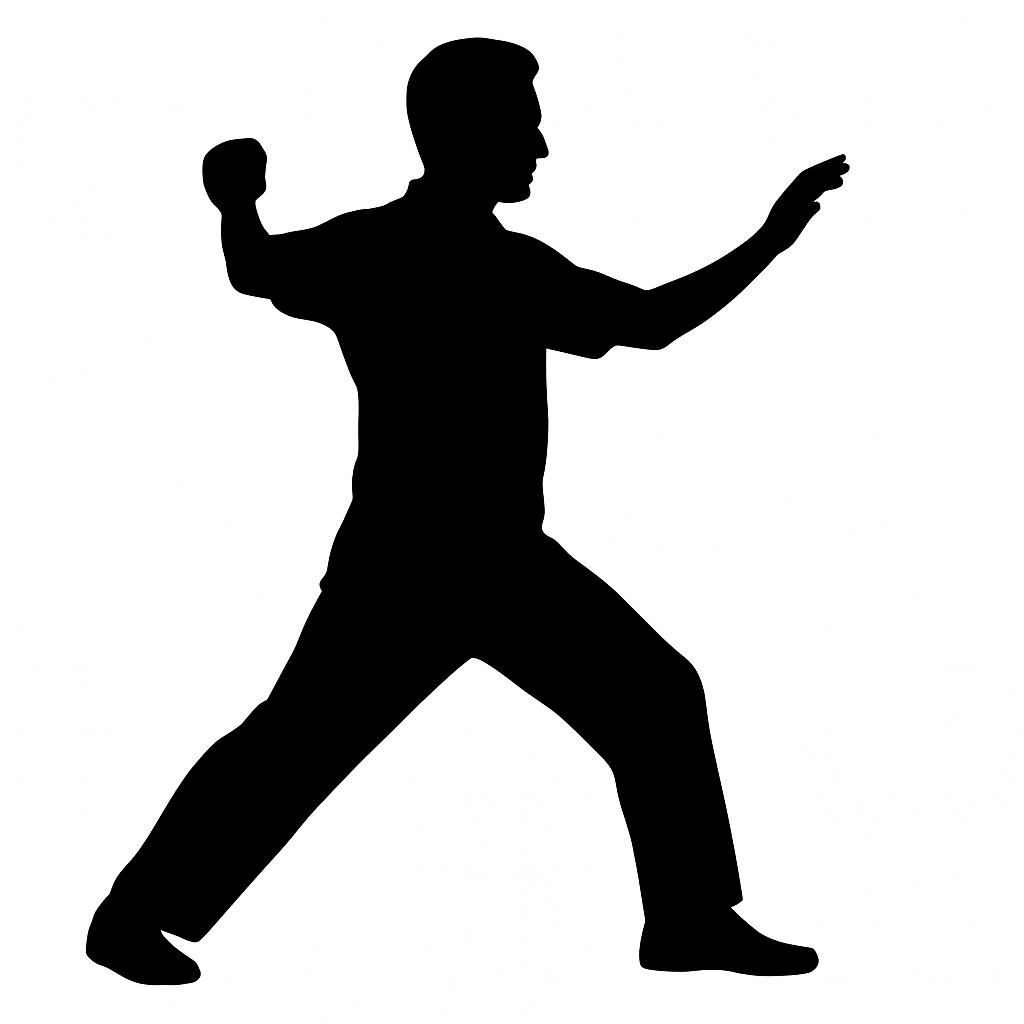Maria asked a great question in class today, “great” because she is new to tai chi and I am surprised she focused on this issue that is indeed a solid question for tai chi practitioners, and one highlighted by Master Chen: how low should we go with our bent knee stances held throughout the form?

Maria noticed that it was easier to stand taller, and that I was demonstrating a taller stance. As a ballet dancer, her legs had the strength to handle a lower stance. Could she go lower, she asked?
The question was great also because it is one to which Master Chen gives a lot of attention, and one in which he proudly difffers from standard Yang-style practice. More on that below, but first a quick physics lesson regarding mechanical advantage.
The physics
The question matters for a very simple reason: a lower stance means more work for our muscles, specifically our leg muscles.
The gentleman on the left in the image above has almost all his weight supported by his skeleton. That is good for bone growth! His leg muscles need only handle his balance.
The gentlemen on the right would flop to the ground without substantial work by his quads and gluts. (His balance needs are the same.)
The lady in the middle is using the skeleton more because her legs are straighter, but her legs are still doing a lot of work, especially if she holds that position for twelve minutes doing Master Chen’s 60 Movements at the proper speed.
Who cares?
Why go lower? Consider the martial application.
A fighter who can get lower than their opponent can drive up and topple their opponent. They have the solid earth below them and their legs push against that, opposed only by their opponents weight, usually an easy lift.
The opponent can do nothing to resist; gravity is their only friend.
If we just want exercise, well, a lower stance means more strength development. Perfect.
So how low do we go?
Given the advantages of a lower stance, we should go as low as possible, right? It depends.
Chen-style focuses on fighting, so it goes very low. Want to fight? Go deep. Muscles, tendons, joints, and flexibility will follow. But warm up fully! And see below for a caveat even on the fighting.
Looking for solid exercise without risking injury? Yang-style was developed for normal folks, so a less strenuous, higher stance is used. Still warm up with simple tai chi movements.
Looking for decent exercise and a moving meditation? Grandmaster Chen takes the higher stance even further.
“However, compared to versions generally taught, my 60 movements are slightly higher in stance and smaller in step. This difference is intentional. In the slow motion of Tai Chi Chuan, body weight is mostly on one leg. If the student is relaxed, as he/she should be, their weight tends to sink down. As a result, it may cause fatigue and exhaustion in the legs, which leads to an unconscious upper body tension. Ultimately, this might the affect the smooth inner qi energy flow and body coordination.
“My higher stances and smaller steps are designed to keep the body more relaxed….”
— Brain Aerobics of Tai Chi Chuan, p.63, Great Grandmaster William CC Chen
But still warm up, so even the first movements are enjoyable.
So how low do I go?
As a weekend warrior athlete, I enjoy feeling my legs work, but I give priority to the meditative quality of the form. I might go lower than Master Chen has in mind, but only enough to gratify my desire for a strength test. I never let the effort become a struggle; it is always a pleasure.
So how low should you go?
This question is easy. I like to say that, with tai chi chuan, we “dial-a-workout”. Go as low or tall as you like. Get your exercise, but enjoy it. When you are done, feel energized. Feel like doing more.
ps. “…and smaller steps.”?
Master Chen said, “…slightly higher in stance and smaller in step.” What does the step size have to do with the height of the stance?
Here is a normal height Yang-style tai chi bow stance:

Notice that not only is the stance lower, but we have also made a longer stride. When we adopt a higher stance, we do not need to step so far:

And now our “empty step”, during which we hold our weight and balance on one leg, gets a lot easier, and we can relax more into the standing meditative flow.
pps. Fighting stance?
Above I said someone interested in fighting might adopt a lower stance, to build greater strength, and be able to fight from a lower position, getting under an opponent. That is true, but…
…standing tall is also a great stance for the actual fight. Muhammad Ali and George Foreman both boxed from upright stances. That let them relax and conserve energy. But they were alert relaxed, not sleepy relaxed. Indeed, a relaxed fighter has more energy for tuning into their opponent. They have less going on internally, and that let’s them focus on the threat.
And more power can be generated from a relaxed start, as Master Chen described in his original work, “Body Mechanics”.
Meanwhile, there are other ways to develop the conditioning required for fighting.
As for getting under an opponent, a good striker works from outside, not inside. There are other styles that work low and get inside. Rocky Marciano and Joe Frazier are two examples of fighters that worked from a crouch, took a lot of blows to the head, but wore their opponents down by getting inside and working the body before unleashing knockout punches from close in.
Thank you for this great answer!